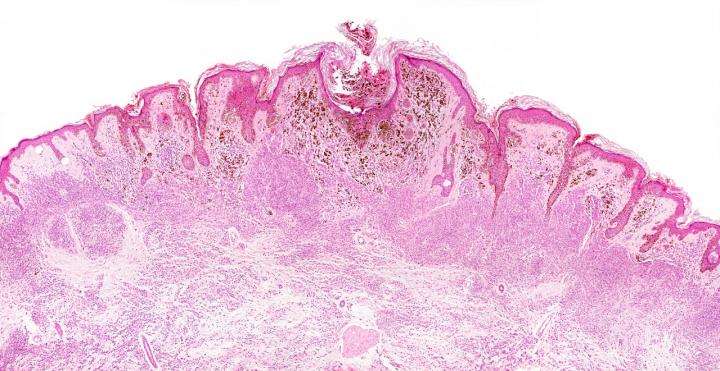That is because they will often be a harbinger of spread to distant organs. Most cancer deaths happen after cancer spreads to other parts of the body through a process known as metastasis. This occurs when cancer cells from the primary tumor spread through blood vessels or migrate through lymphatic vessels before entering the blood.
New research on melanoma provides insight into why this occurs and found that melanoma cells that pass through the lymph nodes pick up a protective coating, allowing them to survive high levels of oxidative stress in the blood and go on to form distant tumors.
The researchers observed how human melanoma cells behaved when injected intravenously or into the lymphatic system of mice. They found that cancer cells injected into lymph nodes had a better chance of surviving and forming tumors than those injected directly into the blood.
They hypothesized this difference could be explained by the high levels of oxidative stress cancer cells experience when they migrate through the blood. Exposure to oxidative stress in the blood is one reason why metastasis is a very inefficient process in which most cancer cells die before they have an opportunity to grow at a distant site.

Melanoma cells. Image: UT Southwestern Medical Center
"After further analysis, we discovered that the oxidative stress in the blood causes the cancer cells to undergo a specific form of cell death called ferroptosis," says Jessalyn Ubellacker, Ph.D., lead author of the study and a postdoctoral researcher at Children's Medical Center Research Institute at UT Southwestern. "In contrast, cancer cells in lymph experience lower levels of oxidative stress and are protected from ferroptosis."
To better understand why melanoma cells undergo ferroptosis in the blood but not the lymph, researchers looked for metabolic differences between cancer cells in the blood versus the lymph. They discovered cancer cells from the lymph had higher levels of a monounsaturated fatty acid known as oleic acid, which is the main component of olive oil. They also found this monounsaturated fatty acid was incorporated into the membranes of cancer cells in the lymph. This diluted polyunsaturated fatty acids in the membranes of these cells, inhibiting the chemical reactions that lead to ferroptosis and protecting the cells.
This protective coating of oleic acid from the lymph thus allowed the cancer cells to safely enter the blood, travel to other locations, and form metastatic tumors. This explains why cancer cells often form tumors first in lymph nodes before metastasizing to distant sites through the blood: They are able to load up on antioxidants in the lymph that protect the cells when they subsequently enter the blood.






Comments